The beauty of Bangla calligraphy
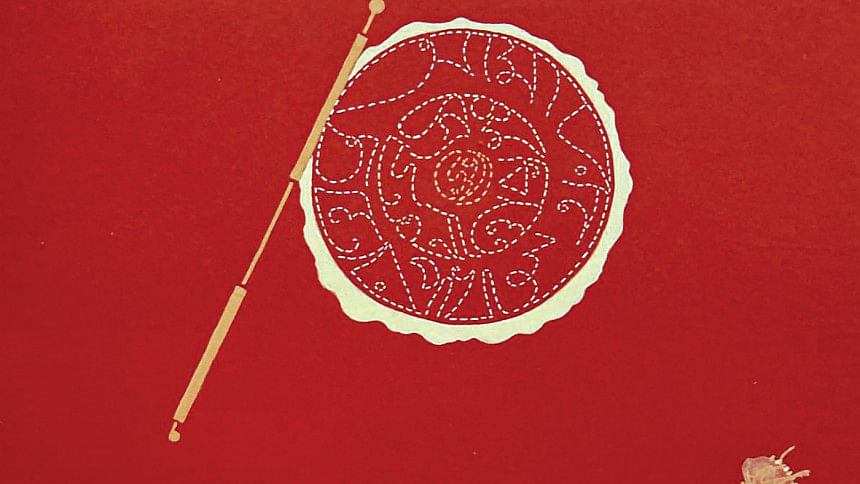
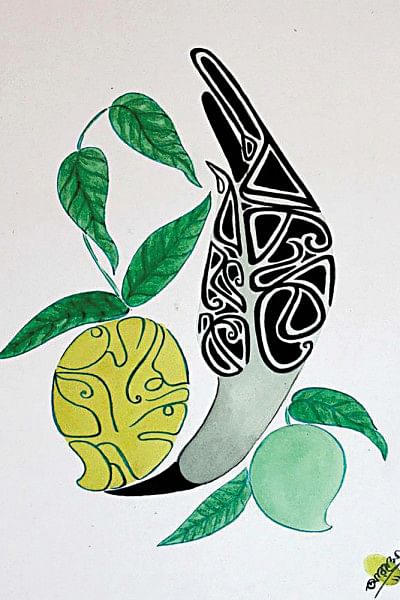
What comes to mind when you hear the word calligraphy? Probably, the fluid artistic representation of the Arabic alphabets, the oriental delight that is the Chinese script, or English letters in Gothic font with extravagant curves. But, have you ever thought about Bangla calligraphy — the beauty of Bengali expressed through lyrical strokes and the endless possibilities it holds as an aesthetic form?
The word calligraphy is a combination of two Greek words — kallos, meaning 'beauty' and graphein, meaning 'to write.' So, calligraphy literally means 'beautiful writing.' It is a form of ornamental handwriting prevalent in various cultures throughout the world and its origin dates back to ancient times.
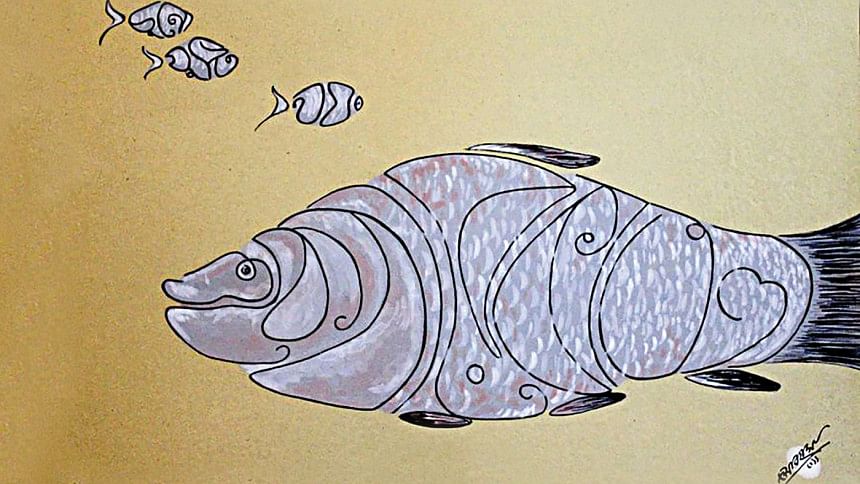
It will not be an exaggeration to say that Bangla calligraphy has not received much attention until recent times. Considering the fact that we have so many letters, there is a huge potential for Bangla calligraphy to be artistically expressive. Poster and wall writing has been a part of our cultural identity for quite some time now, but it did little for the development of the art.
Many people are interested in calligraphy but only a handful of them practice the art. Even fewer are serious about it. Some people think that calligraphy is just 'good handwriting.' It is so much more than that.
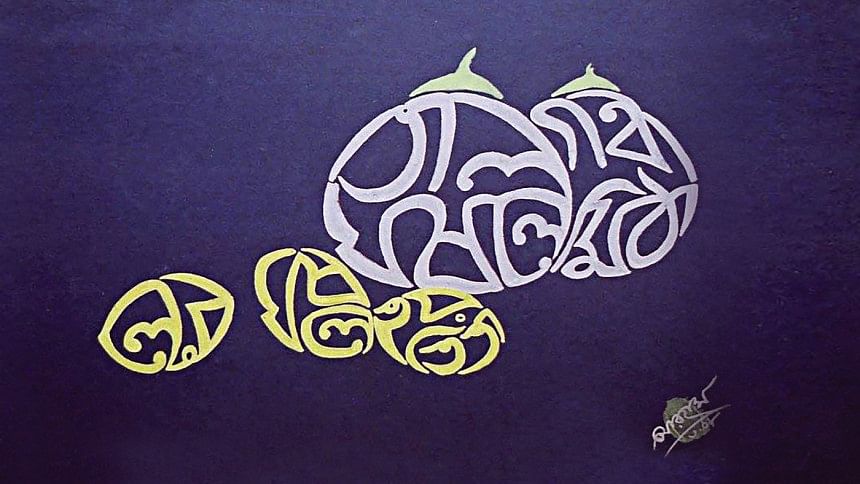
The essence of Bangla calligraphy
While it is true that Bangla calligraphy has largely been neglected, there are very few who are passionately practicing it and fortunately for us, the art form still survives. In fact, it is thriving in the hands of Arham-ul-Huq Chowdhury, an artist working to express the true beauty of Bangla calligraphy in its glory and the devotion is visible in his work.
Having started his artistic endeavour in 1995 with hand-painted furniture and pottery, Chowdhury soon realised that he should do something with calligraphy. In 2000, he had his first-ever solo exhibition of Bangla calligraphy at Goethe Institute, which was also the first one of its kind in Bangladesh. Since then, he's had more than 22 exhibitions in Bangladesh.
I spend so much time looking at calligraphies of other cultures, comparing different scripts and how Bangla is different from them. How Bangla could be expressed, it's unbelievable.
Chowdhury wanted to go beyond the norm. "Anyone can write simple scripts like 'Eid Mubarak' or 'Tomake Valobashi'" he said. There are so many different elements of Bangla language that can be expressed in calligraphy and he focused on that. "I like to call them calligraphy painting and believe they are highly communicative," he said, pointing to his artworks.
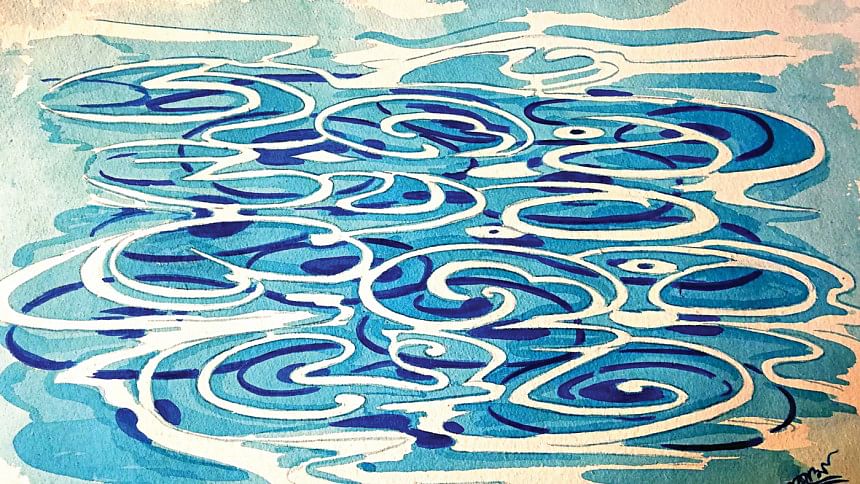
Shrestha Halder is an amateur calligrapher who has been trying Bangla calligraphy for a couple of years now. His passion was ignited by a love for the fountain pen.
"One thing I can point out is that the pen for Bangla calligraphy is quite different. The paper can vary depending on what instrument you are using to write, and since I use mostly fountain pen, any fountain pen friendly paper works for me," said Halder.
She elaborated on the different methods and styles she has adopted lately. Devanagari script has similarities with Bangla, and Halder draws inspiration from Devanagari script in her search for style.
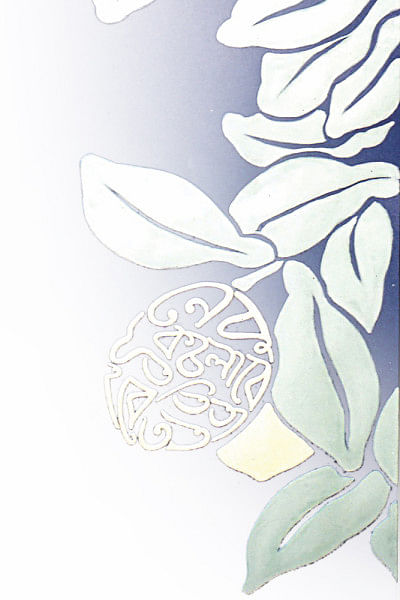
The elements and instruments
Like any other form of art — there are no rules. One may use whatever one is comfortable with as long as one can express themselves in their art and like painters, calligraphers will tell you the same thing. Shrestha Halder for example, is trying out different types of fountain pens and their impressions on different types of papers.
Arham-ul-Huq Chowdhury on the other hand has used many different types of papers and writing instruments in his journey. In the end, he opted for brush; often used on handmade paper.
"I like putting characters in my art and it's visible in my calligraphies. Even the paper itself has a character in the end product," he elaborated, explaining the stories behind some of his best pieces.
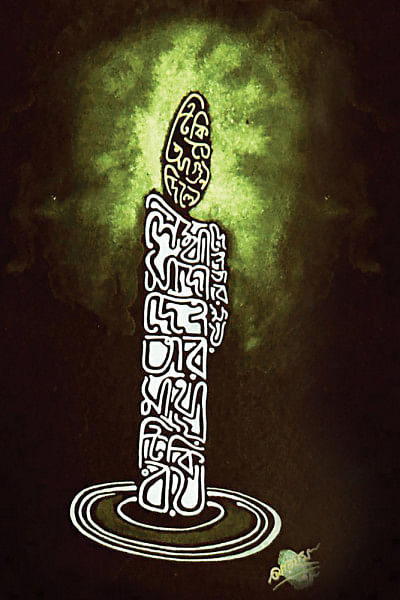
"Instead of just plainly scribbling words, I have a different approach. Bangla language has so many riddles, idioms and phrases, and more interestingly 'Khanar bachans' and such. I try to put them into letters while expressing them in the visuals at the same time," he explained the innovative way of his calligraphy which is not only conspicuous but more challenging as well.
Thus, in his calligraphies, 'biral toposhi' is a cat, which has a saintly look but is a conniving creature at its core. 'Bagher Aari' is a Bengal tiger who is grumpy. 'Godai loskori' is a fully-loaded boat which is exactly what the phrase itself originated from.
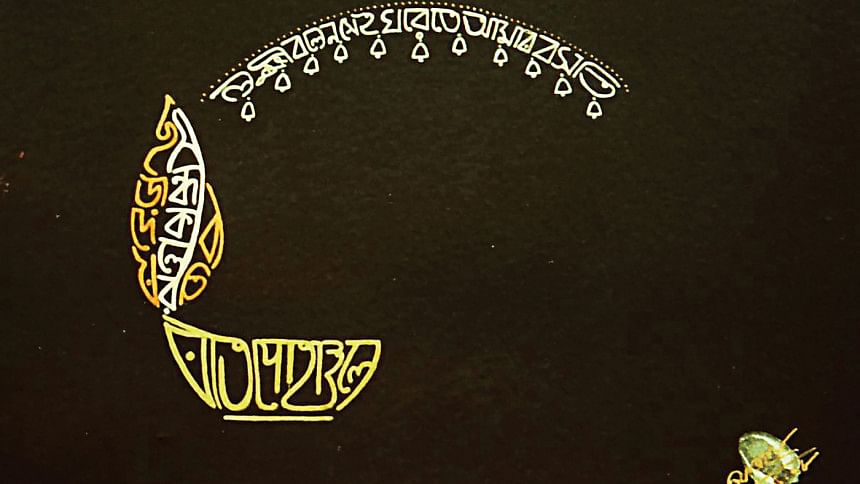
All of these are fascinating and one can imagine the effort and research that went behind these creations.
The untold challenges
Arham-ul-Huq Chowdhury has made significant contributions to the field of Bangla calligraphy and amateurs are now getting interested. One of the major issues in the field is that it lacks research. There is barely any reference material, if any at all. Both the professionals and the amateurs agree on this.
"I have no reference material to base my work on. So, I have to turn to Devanagari script or try out different methods. Trial and error; that's how I progress because there is no other way," says Halder.
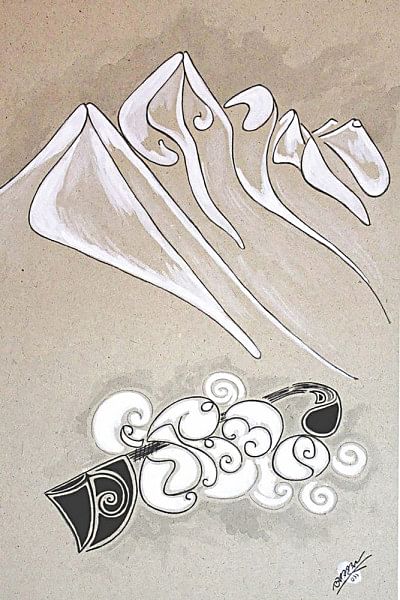
Chowdhury said, "I spend so much time looking at calligraphies of other cultures, comparing different scripts and how Bangla is different from them. How Bangla could be expressed, it's unbelievable. If you are trying to do Bangla calligraphy, you really have to do everything yourself and from the scratch."
The Bengali culture has always prided itself on its riches. The pride is understandable but at the same time, over the years, we have lost several elements of our valued culture. Without proper attention and interest, Bangla calligraphy could be one of those lost aspects. Considering the beauty and potential of it, we hope that day never comes.
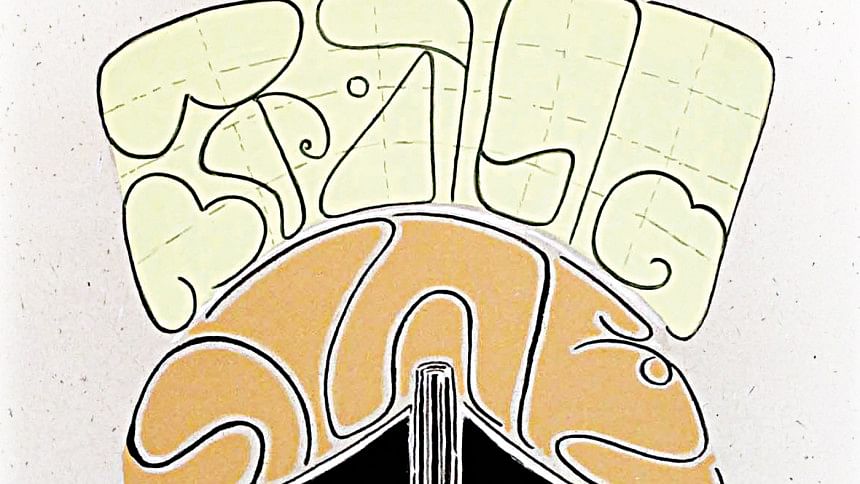
Calligraphy:
Arham-ul-Huq Chowdhury

 For all latest news, follow The Daily Star's Google News channel.
For all latest news, follow The Daily Star's Google News channel. 



Comments